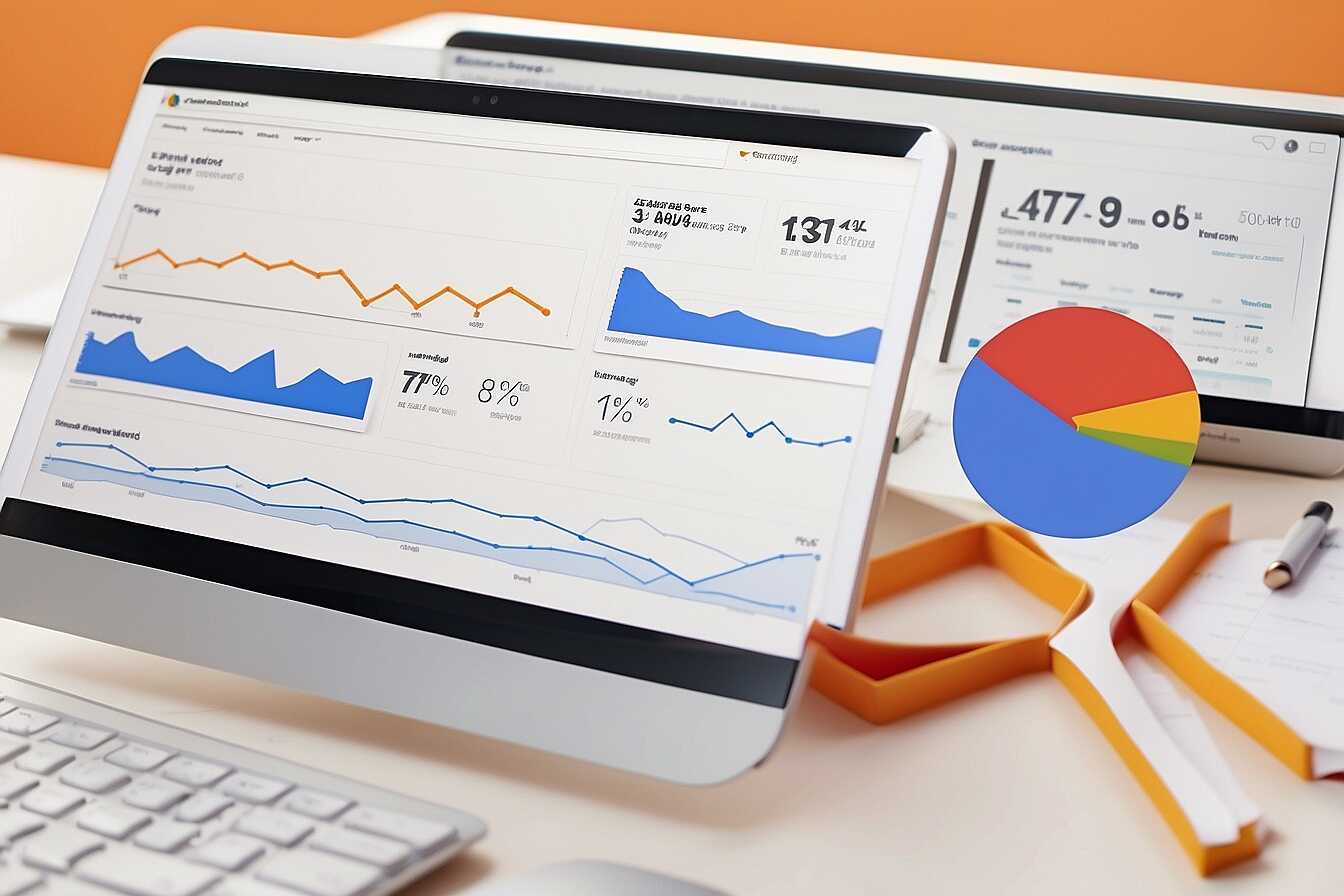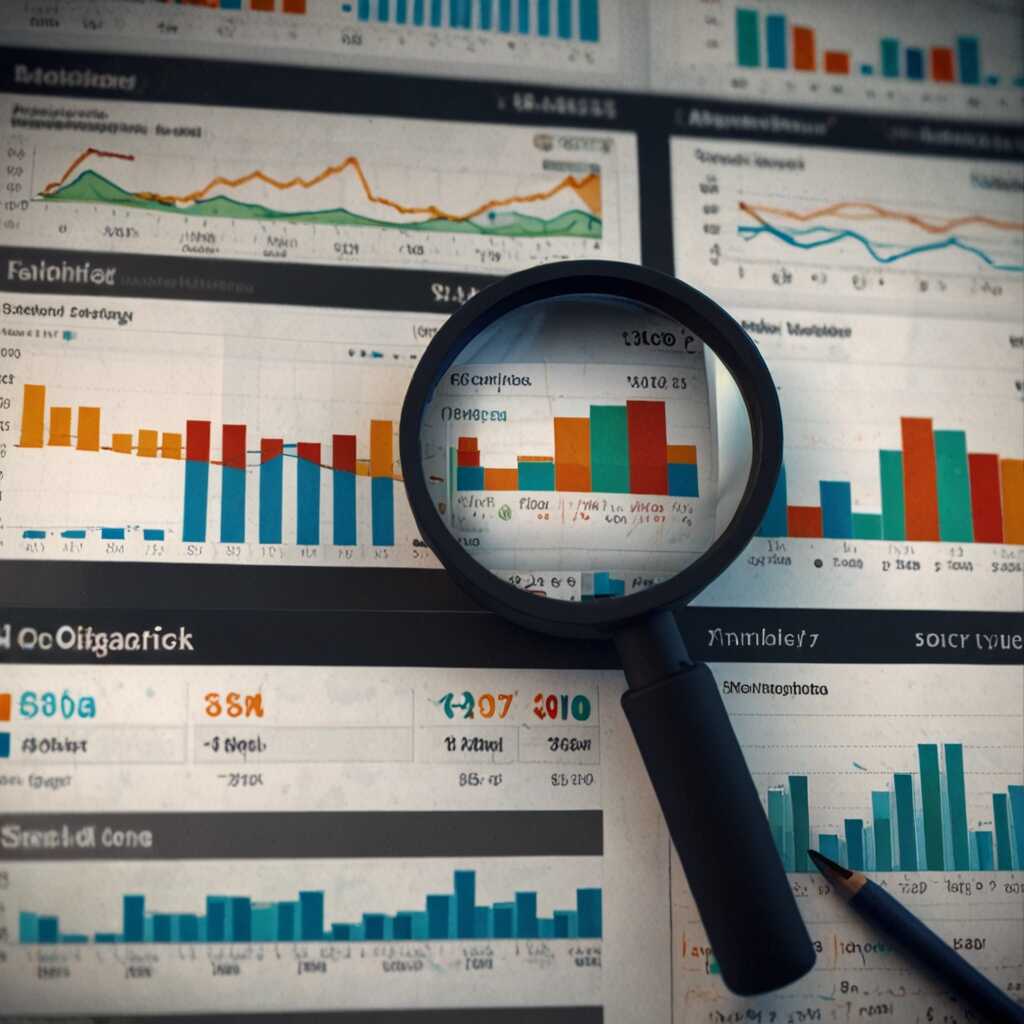Identifying technical SEO issues using Google Analytics insights can significantly enhance your website’s performance and visibility. By leveraging Google Analytics, you can uncover hidden problems that may be dragging down your search engine rankings. At Metrics Rule, we focus on harnessing data to solve these issues, ensuring your website is optimized for better crawling and indexing. With a blend of technical knowledge and SEO expertise, we will guide you through the practical steps to diagnose and rectify these crucial concerns.
The Importance of Technical SEO for Website Success
Technical SEO entails optimizing website infrastructure to enhance its performance and improve visibility in search engines. This includes components such as page speed, mobile optimization, site architecture, and indexing strategies. Addressing technical SEO issues is essential, as these problems can significantly impact user experience. A well-optimized site ensures fast loading times and smooth navigation, which are both crucial for keeping visitors engaged and reducing bounce rates. For example, websites with optimal technical performance have higher chances of ranking better on search engines like Google and Bing, resulting in increased organic traffic.
Understanding Key Technical SEO Elements
Key elements of technical SEO, like site speed and mobile optimization, influence how search engines crawl and index your website. Site speed, for example, significantly affects user retention—studies show that a one-second delay in load time can reduce conversions by up to 20%. Mobile optimization ensures that your e-commerce site is user-friendly on all devices, catering to the fact that over 50% of web traffic now originates from mobile users. By conducting thorough website audits and utilizing tools like Google Analytics, you can identify crucial technical issues that impair website performance. This helps you implement effective solutions designed to enhance both user experience and search rankings.
Getting Started with Google Analytics for SEO Optimization
Google Analytics provides essential features that help identify technical SEO issues. Key features include the Behavior Flow report, which visualizes user navigation through your website. The Site Speed report offers insights on loading times, helping you pinpoint slow pages that may affect user experience. Different users—including e-commerce websites and local businesses—can leverage Analytics insights to improve website performance, by reviewing metrics like bounce rates, session duration, and conversion rates. Setting up Google Analytics for tracking SEO performance involves creating an account, adding the tracking code to your website, and defining goals based on your specific objectives.
Understanding Key Features for SEO Insights
To effectively utilize Google Analytics for SEO, it is crucial to understand its key features designed for in-depth analysis. The Acquisition reports break down where your traffic is coming from, allowing you to compare organic search performances with other channels. The Google Search Console integration enhances your SEO analysis by providing data on search queries and landing page performance. Implementing events tracking can help monitor specific user actions, such as downloads or form submissions, which are vital for e-commerce websites. The Analysis Hub offers advanced filtering options that can reveal useful patterns in user behavior and help you spot potential technical issues swiftly.

How to Identify and Fix Crawl Errors Using Analytics
To identify common crawl errors in Google Analytics, start by checking the “Behavior” section. Look at the “Site Search” or “All Pages” report for URLs with low pageviews or high bounce rates. These issues often indicate crawl errors, preventing search engines from indexing your pages effectively. Understanding your website’s visibility can reveal critical issues like 404 errors or server issues that impact your rankings. Utilizing Google Analytics effectively helps you detect these errors and enhance your site’s performance. Regularly check reports to ensure all essential pages are crawlable and address any identified crawl issues promptly.
How to Resolve Common Crawl Errors in Google Analytics
After identifying common crawl issues through Google Analytics, you can resolve them by auditing the specific URLs reported. Begin by ensuring that your sitemap accurately reflects the current structure and includes all pages that you want indexed. For pages returning 404 errors, create custom 301 redirects to guide users and search engines to the correct pages, improving overall user experience and SEO performance. Consider using the Google Search Console in tandem for further insights into how Google crawls your site. By monitoring crawlability, fixing technical errors, and improving your site structure, you can significantly enhance your website’s SEO visibility.
Key Statistics in Understanding SEO Insights
- Over 60% of web traffic originates from search engines.
- Only 50% of websites have properly set up Google Analytics.
- Technical SEO issues can reduce rankings by 50% or more.
- Using Analytics can uncover at least 10 technical problems.
- Fewer than 30% of website owners monitor site speed regularly.
- More than 75% of users do not revisit a slow site.
- A site should achieve a loading time under 3 seconds for optimal performance.

Analyzing Page Speed Metrics for Better SEO Performance
In Google Analytics, the essential metrics for identifying page speed issues include Average Page Load Time, Server Response Time, and User Timings. These metrics provide insight into how quickly a page loads and how well it performs in terms of SEO effectiveness. Additionally, factors such as render-blocking resources and third-party scripts can substantially impact load times, affecting user experience and search engine rankings. Understanding these components helps pinpoint areas for optimization to enhance overall website performance and visibility.
Understanding Components That Affect Page Load Times
To truly enhance your page speed optimization efforts, focus on key components like server response time and render-blocking resources. Server response time measures how long the server takes to respond to a user’s request. A delay can negatively impact site performance, reducing user satisfaction and increasing bounce rates. Render-blocking resources, such as CSS and JavaScript, can also delay page rendering, which makes it crucial to analyze these in Google Analytics. Using effective testing methods, cleans up unnecessary code, and employs asynchronous loading techniques can deliver significant SEO benefits, ensuring quicker page speeds that align with best practices for 2025.

Leveraging Audience Insights to Uncover Technical Issues
To identify technical SEO issues, focus on audience behavior metrics like bounce rate, session duration, and page load times. Bounce rate can indicate poor user experience or load speed issues. Analyze traffic patterns to see which pages are underperforming versus the overall site average. User interactions, such as click-through rates and scroll depth, can reveal engagement discrepancies that hint at technical problems like missing images or broken links. Additionally, demographic data offers valuable insights into how different audience segments engage with your site, further guiding your analysis of potential technical SEO issues.
Understanding Traffic Patterns for Better SEO Insights
Understanding traffic patterns involves tracking user journeys throughout your site. Utilize Google Analytics to monitor how users navigate from entry points to exit pages. Analyze which pages receive the most visits and where users drop off. If you notice high exit rates on key landing pages, those may be suffering from technical SEO issues such as slow loading times or poor mobile optimization. By enhancing these pages with targeted improvements, you not only improve user retention but also boost your site’s overall search performance.
Advantages of Utilizing Data for Technical Optimization
- Improved website performance enhances user experience.
- Targeted insights reveal hidden issues in site structure.
- Analytics data helps prioritize SEO fixes effectively.
- Regular analysis can boost organic visibility significantly.
- Clear performance metrics guide future content strategies.
- Monitoring improves site speed, leading to higher engagement.
- Insights from Analytics enable quick decision-making for SEO enhancements.

Assessing Your Site Structure Through Google Analytics Data
Google Analytics offers critical insights that help identify structural weaknesses in your website. You can analyze metrics like bounce rates and session durations to pinpoint pages that lack engagement, revealing places where users disengage. This information can guide you on where to enhance navigation paths, improve internal linking, and optimize user experience. Utilizing features like the Behavior Flow report also allows you to see how users travel through your site, helping improve structural elements that may hinder SEO performance. Implementing best practices based on this data enhances your site’s reliability and strengthens its ability to rank higher.
Key Metrics to Evaluate for Site Structure Optimization
When assessing site architecture, focus on key Google Analytics metrics such as average session duration, bounce rates, and exit rates. Aim for an average session duration of more than three minutes, which indicates quality engagement. A bounce rate below 40% is an excellent goal, meaning visitors are satisfied and are navigating beyond the landing page. The Behavior Flow report visually maps user paths, showing where visitors navigate effectively as well as where they drop off. This data helps improve the quality of your site structure, ensuring easier crawling and indexing by search engines, which ultimately enhances your site’s SEO performance.
Monitoring Mobile Usability Metrics in Google Analytics
Mobile usability is critical for technical SEO as it directly affects user experience and conversions. In Google Analytics, essential metrics to track include bounce rate, pages per session, and average session duration for mobile users. By analyzing these metrics, you can identify obstacles in mobile navigation, such as long load times or difficult-to-navigate layouts. You can also utilize features like cohort analysis to review how mobile users engage with your website compared to desktop users. This data enables you to enhance the mobile experience based on real user interactions.
Essential Techniques to Optimize Mobile User Experience
To optimize the mobile user experience effectively, focus on key performance indicators, such as load speed and mobile responsiveness. Use Google Analytics to monitor mobile interaction data, which provides insights into how users navigate your site on different devices and operating systems. This information is essential for e-commerce sites, where user experience can directly affect sales. Adjust website layouts, images, and buttons to ensure they are comfortable to use on mobile devices. Improving mobile usability not only enhances user satisfaction but also boosts your site’s SEO performance, ensuring better visibility in search engines like Google and Bing.
Savvy Brands and Use Cases for SEO Analysis
- Google Analytics is widely used by bloggers to track their traffic.
- SEMrush offers tools for competitive analysis and technical reviews.
- Ahrefs helps content creators identify link-building opportunities.
- Online retailers like Amazon use data to optimize their sales funnels.
- Local businesses utilize Google My Business for visibility and insights.
- Service providers monitor customer behavior to enhance user satisfaction.
- Nonprofits leverage data to understand donor engagement and web visits.
Developing a Comprehensive Plan for Technical SEO Improvements
Creating an effective technical SEO improvement plan starts with analyzing Google Analytics data to identify issues. Examine user behavior metrics, site speed reports, and error logs to pinpoint technical challenges. Key technical SEO challenges include improving page speed, ensuring mobile-friendliness, and fixing broken links. Rank these challenges based on their impact on traffic and performance. For successful planning, monitor at least three to five key performance indicators (KPIs), such as organic traffic growth, page load speed, and user engagement rates. This structured approach helps in efficiently prioritizing SEO improvements.
Identifying High-Impact Technical Issues for Prioritization
To prioritize high-impact issues from your analysis, focus on challenges that directly affect user experience and search rankings. For instance, investigate site speed, as slow load times can lead to a significant drop in user engagement. Address mobile usability issues since over 50% of searches now come from mobile devices. Utilize Google Analytics insights to compare traffic before and after fixing specific issues, allowing you to see which improvements deliver the best results. This process enhances overall site performance, enabling better indexing and higher rankings in search engines like Google and Bing.
